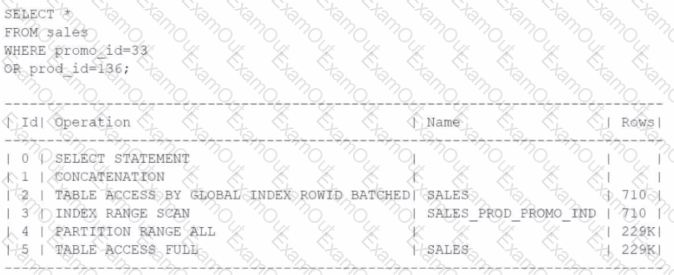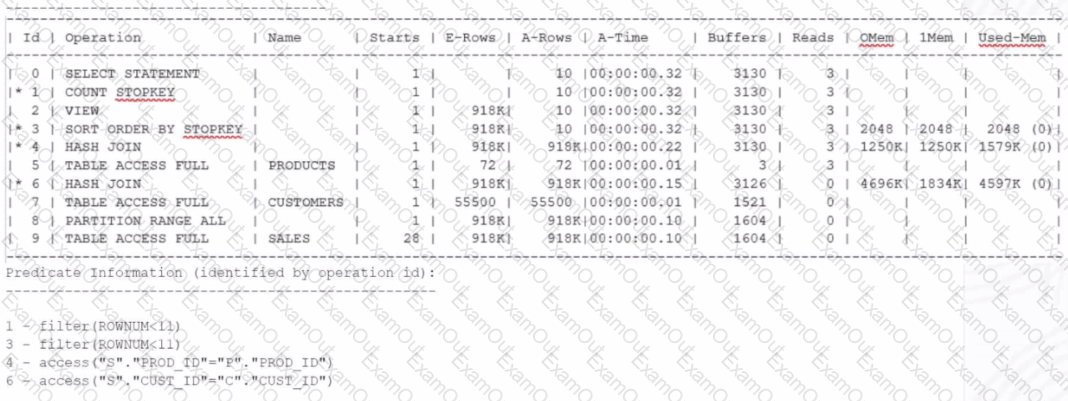Which two statements are true about the use and monitoring of Buffer Cache Hit ratios and their value in tuning Database I/O performance?
Examine this statement and its corresponding execution plan:

Which phase introduces the CONCATENATION step?
Which three types of statistics are captured by statspack with snap level 6?
You must configure and enable Database Smart Flash Cache for a database.
You configure these flash devices:

Examine these parameter settings:

What must be configured so that the database uses these devices for the Database Smart Flash Cache?
You must write a statement that returns the ten most recent sales. Examine this statement:

Users complain that the query executes too slowly. Examine the statement's current execution plan:

What must you do to reduce the execution time and why?
Multiple sessions are inserting data concurrently into a table that has an LOB column.
At some point in time, one of the sessions cannot find available space in the LOB segment and needs to allocate a new extent.
Which wait event will be raised in the other sessions that need space in the LOB column?

